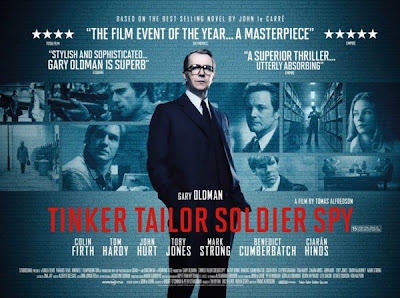This documentary delivered a strong message against American involvement in Vietnam as the war neared its height and widespread public opposition to it had crested.
The title would play on an allusion to Chinese astrology, which designates each in a cycle of twelve lunar years by animal names. But 1967 was a ‘goat’ year and 1968 a ‘monkey’ year. ‘Pig’ was the choice counter-culture epithet at the time for the police and ‘authority’ in general, and used here to offend those who ‘supported’ the war—itself a vexed issue which presumed ‘supporters’ of those who did not actively and vocally oppose the war.
Like Michael Moore, director Emile de Antonio makes no secret of his bias. However, in addition to ‘bomb-throwing’ gratuitously shocking images to get audiences’ attention, de Antonio’s talking heads are legitimate Vietnam scholars, journalists, and former government and elected officials whose insights make a strong case against a war that from hindsight we know to have been a mistake.
De Antonio shows American politicians, among whom President Lyndon B. Johnson, Vice President Hubert H. Humphrey, Secretaries of State John Foster Dulles and Dean Rusk, House Minority Leader Gerald R. Ford, presidential candidates Richard M. Nixon and Curtis L. Lemay, and an array of the top military brass—the ‘pigs’—propounding conventional attitudes that reflect American solipsism. Not least among these is the desire to apply massive military technology to fight Asians who do not ‘value life’ as Americans do.
De Antonio does a good job of giving the background that led to United States involvement in the southeast Asia, starting in the pith-helmeted twilight of French Indochina, and ending with the ‘election’ of South Vietnamese President Nguyễn Văn Thiệu and Vice President Nguyễn Cao Kỳ in September 1967.
The United States came to Vietnam with an ambitious political agenda but little grasp or feeling for local conditions. It took over the war from French colonialists and made many of the same mistakes as the French, fighting homegrown nationalists whom Americans had backed fighting Vietnam’s Japanese occupiers during World War II. After bringing its own enormous military, economic and political resources to bear, the U.S. even repeated some its own mistakes, such as attempting forcibly to relocate villagers, with tragic consequences for itself and the whole of that country.
‘I sometimes wonder why we Americans enjoy punishing ourselves so much with our own criticism,’ a frustrated Johnson says at a White House press briefing that serves as a kind of prologue to the piece. This would be the key to film’s message: for all the ‘criticism’ the war occasioned, little seems to have been learned.
Among the film’s numerous talking heads are Roger Hilsman, an academic, former State Department official and Kennedy and Johnson administration advisor who resigned over Johnson’s Vietnam policy; Paul Mus, a Yale University Asia scholar; Col. William R. Colson, a former intelligence officer; David Halberstam of The New York Times; Daniel Berrigan; and U.S. Senators Wayne L. Morse and Ernest Gruening, the only senators to vote against the 1964 Gulf of Tonkin Resolution that led to Johnson’s 1965 escalation of U.S. military involvement in Vietnam.
Hilsman, possibly speaking of his disagreement with Johnson’s Vietnam policy, said that Kennedy had been clear about avoiding two things in Vietnam: making it an American war and ‘internationalizing’ the war by attacking the north.
‘[Kennedy] used to say, “It’s their war, the South Vietnamese. We can give them aid, we can even give them advisors, but they must win it or lose it… He felt that if we put Americans in there, with our white faces, it would drive the nationalists into the arms of the communists,’ Hilsman said.
As for ‘internationalizing’ the war by bombing or attacking the north, Kennedy felt ‘first and foremost it would not work, and thirty months of bombing have shown that his judgment was right,’ Hilsman said in 1967.
The film briefly notes the synchronism of the November 1963 assassinations of the corrupt and ineffective South Vietnamese President Ngô Đình Diệm and Ngô Ðình Nhu, his brother and advisor, and the Kennedy assassination three weeks later.
The work was finished before but released after the momentous Tet Offensive of January-March 1968, an all out, nationwide gamble timed to start at the beginning of the Asian lunar new year—Tet—that was a military disaster for the North Vietnamese, but won them a decisive propaganda victory. It turned the tide of American public opinion against the war because the military and politicians had assured Americans that the war was all but won, when the North lit up the whole of the South with this high profile, countrywide military operation in the winter of 1968.
Film footage that de Antonio dug up in American, French and Vietnamese archives, including clips—motion pictures rather than still photographs under a moving camera—from the French colonial and military period, of Hồ Chí Minh and French officials right after the Second World War, and Hồ in North Vietnam, makes this documentary worth seeing.
In one clip, David Halberstam relates an interview between American Vietnam scholar Bernard Fall and North Vietnamese Prime Minister Phạm Văn Đồng about South Vietnamese President Ngô Đình Diệm in 1962.
‘Dong was saying, “Poor Diem, poor Diem. He is unpopular. And because he is unpopular, Americans must give him more aid. And because Americans give him more aid, he becomes less popular and Americans must give him more aid…”
‘Fall interrupted [Đồng]. “That sounds like a vicious circle,” he said. Phạm Văn Đồng paused and said, “No, not a vicious circle, a downward spiral.”’
Fall, a respected academic and author whose books include the Vietnam classics Street without Joy (1961) and Hell in a Very Small Place: The Siege of Dien Bien Phu (1966) about the French war, was killed by a landmine while accompanying U.S. troops in the field in February 1967.


















